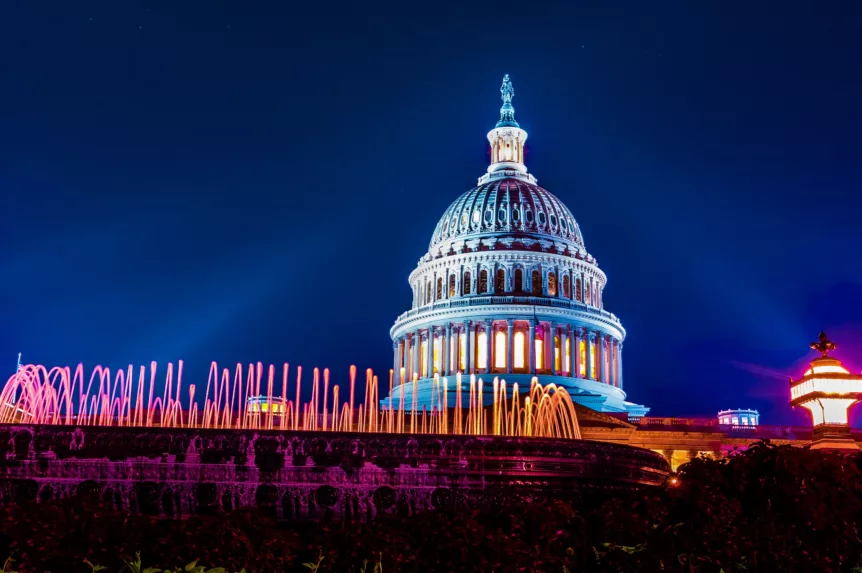Kristen Cheriegate | ICAST Policy Analyst
*******************
Environmental Protection Agency Releases Framework for Greenhouse Gas Reduction Fund
The Environmental Protection Agency (EPA) released new details on implementing the $27B Greenhouse Gas Reduction Fund (GGRF). Funds for the GGRF were provided by the Inflation Reduction Act (IRA); this Program will leverage public investment with private capital to finance clean energy projects that reduce electricity bills, create jobs, and reduce air pollution, with a focus on low-income (LI) and disadvantaged communities (DACs). Per EPA’S announcement, there will be three grant competitions:
- a $14B National Clean Investment Fund that will fund 2-3 national nonprofits that will partner with private capital providers to deliver financing at scale to businesses, communities, community lenders, and others,
- a $6B Clean Communities Investment Accelerator will fund 2-7 hub nonprofits that will build the clean financing capacity of specific networks of lenders, including community development financial institutions (including Native CDFIs), credit unions, green banks, and housing finance agencies, and
- a $7B Solar for All competition will provide up to 60 grants to States, Tribal governments, municipalities, and nonprofits to help prime LI communities and DACs for residential and community solar investment.
EPA intends to start accepting applications as early as June 2023.
Biden-Harris Administration Releases Inflation Reduction Act Guidebook for Tribes
The White House released the “Guidebook to the Inflation Reduction Act’s Clean Energy and Climate Investments in Indian Country,” which clearly describes the law’s tax incentives and funding programs for which Tribes are eligible. The IRA provides more than $720M to help ensure greater access to clean and affordable electricity within Tribal lands and Native communities and increase resiliency in the face of climate change. In addition to these dedicated funds, the Guidebook outlines Tribal eligibility for other aspects of the IRA, including billions in grant and loan programs and clean energy tax incentives. As non-taxable entities, Tribes generally have not benefited from clean energy tax credits designed to incentivize clean energy deployment. Now, the IRA allows Tribes to receive direct payments in lieu of tax credits, allowing them to get money back on their clean energy investments.
Internal Revenue Service Releases Guidance on Energy Community Bonus Credits Under the Inflation Reduction Act
The Internal Revenue Service (IRS) released a notice describing specific rules that the IRS intends to include in forthcoming proposed regulations for determining what constitutes an energy community for the production and investment tax credits. The IRA allows for increased credit amounts if certain requirements pertaining to energy communities are satisfied. The increased credit amount available for meeting the requirements of the energy community provisions is generally 10% for the production tax credit and up to 10 percentage points for the investment tax credit.
Dept. of Housing and Urban Development Allocates Millions to Help States Produce Affordable Housing
The U.S. Dept of Housing and Urban Development (HUD) allocated $382M through the nation’s Housing Trust Fund (HTF), a formula-based program for States and U.S. Territories. State affordable housing planners will use funds for property acquisition, site improvements, related soft costs, financing, and other eligible activities. Each state is allocated a minimum of $3M.
President Biden Signs Executive Order on Environmental Justice
President Biden signed a new Executive Order on Revitalizing our Nation’s Commitment to Environmental Justice for All (EO14096), intended to further embed environmental justice into the work of federal agencies. Some highlights from this order:
- It charges federal agencies with conducting new assessments of their environmental justice efforts and developing, implementing, and periodically updating an environmental justice strategic plan,
- It directs agencies to identify and address gaps in science, data, and research related to environmental justice, and
- It establishes the White House Office of Environmental Justice and tasks it with coordinating the implementation of environmental justice policy across the federal government.

